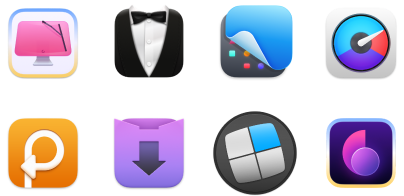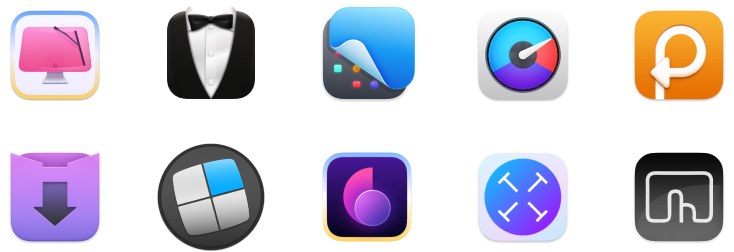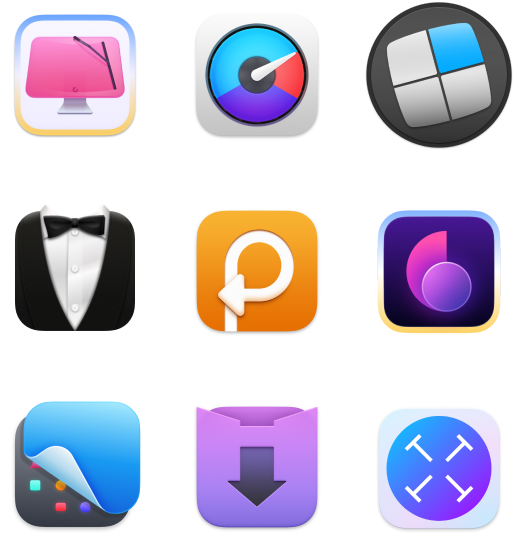How to use Sticky and Slow Keys on Mac: Full guide
Something I praise Apple devices for is their wide range of accessibility options. These options not only make a Mac more accessible for people with disabilities, but they can also help you hone your typing flow, customize sound preferences, and more.
In this article, I’ll discuss Slow Keys and Sticky Keys: what they do, the most common use cases, and how to enable/disable these features on Mac.
What is Slow Keys on Mac?
Slow Keys is a handy accessibility feature baked into macOS that lets you change the length of time you hold the key before the system registers the keypress.
It’s particularly useful for people with limited dexterity and those who can’t make repeated keystrokes, for kids who are just learning how to type, and also a smart tool to adjust your typing flow! For example, if you’re a fast yet messy typer who often ends up with many typos, you can use Slow Keys to force yourself to slow down when you type.
What do Sticky Keys do on Mac?
Sticky Keys on MacBook helps take the effort out of pressing multiple keys simultaneously. With this accessibility feature enabled, you can press keys one by one to trigger an action instead of doing splits with your fingers to press four or five keys at the same time. I don’t know if you’ve ever tried adjusting heading formatting, but even as a musician, I struggle to press the Command + Option + number keys all at once. Even some of the most useful keyboard shortcuts on MacBook are a pain to initiate.
How to enable Slow Keys on Mac
For now, let’s go back to Slow Keys. There are a few methods to turn on Slow Keys, going into your System Settings being the most common one:
- Click the Apple menu > Choose System Settings.
- Go to Accessibility > Keyboard under the Motor section.
- Turn on Slow Keys.

Alternatively, you can use the Accessibility Shortcuts feature to enable/disable Slow Keys:
- Press the Touch ID button three times.
- Select or deselect Slow Keys under Motor in the Accessibility Shortcuts window.
- Click Done.

You can also open the Accessibility Shortcuts menu using Option + Command + F5.
Create custom key sequences
While it’s nice of Apple to offer this function, there are ways you can take it to the next level.
BetterTouchTool can help you assign custom key sequences to actions with custom min/max pauses between keystrokes. Why use it? Let’s say you want to trigger the window resize or screenshot feature with your custom shortcut. BetterTouchTool lets you set up any action with a custom trigger in no time.
Here’s how to trigger actions with key sequences:
- Install and open BetterTouchTool and select Key Sequences / Typed Words from the drop-down menu on the top.
- Click the plus button to record a key sequence.
- Click Start Recording and type the keys. Adjust the Min pause before the first keystroke and Max pause between keystrokes and any other settings you want to change > Save.

4. Assign the action to the trigger by clicking the plus button in the second section.

Adjust Mac keyboard response speed
Here’s how you can choose the most comfortable keyboard response speed using the Slow Keys feature:
- With Slow Keys enabled, open System Settings > Accessibility > Keyboard.
- Click “i” or Options next to Slow Keys.
- Move the slider to change the acceptance delay.

If you stick with these settings for some time and realize you need to decrease delay time, Slow Keys settings are easy to tweak, so you can come back anytime and customize the delay, or even disable Slow Keys on Mac.
How to turn off Slow Keys on Mac
Unless you use it as an accessibility tool, slow key response can become frustrating over time.
If you decide to disable Slow Keys on Mac, you can do so by going through the same steps you used to enable Slow Keys:
- Click the Apple menu > System Settings.
- Choose Accessibility > Keyboard.
- Turn off Slow Keys.
Alternatively, press Option + Command + F5 on the keyboard or press the Touch ID button three times and deselect Slow Keys under Motor.
If you don’t remember enabling Slow Keys on your Mac but notice keyboard lag, it could’ve been accidentally enabled. Now you know how to fix it.
How to turn on and off Sticky Keys
Sticky Keys on MacBook simplify the task of pressing multiple keys at once to run a command or trigger an action. This means that when Sticky Keys is on, you can press the keys one by one, and the system will record them as part of a single command.
Here’s how to turn on Sticky Keys on Mac:
- Click the Apple menu > System Settings.
- Go to Accessibility > Keyboard.
- Turn on or off Sticky Keys.

Note that you have a couple of options to customize Sticky Keys:
- Click Options or the “i” button next to Sticky Keys.
- Customize the following options:
- If you don’t want Sticky Keys to be on all the time, enable “Press the Shift key five times to toggle Sticky Keys.”
- Make your Mac “beep when a modifier key is set.”
- Choose whether you want to display the keys you press on the screen and where exactly you want them displayed.
Next, we have to learn how to turn off Sticky Keys. Essentially, you should just go to the Accessibility section in your System Settings again and disable Sticky Keys.
If you don’t want to fully disable this feature, go to your Sticky Keys settings (the “i”) and enable the option to press Shift five times to turn on and off Sticky Keys.
How to manage Slow Keys and Sticky Keys [Soved]
You can get the most out of keyboard accessibility features if you use them alongside useful Mac apps that can help improve your typing speed and customize the shortcuts you use.
The good news? The apps covered in this article that can help you with those actions, KeyKey Typing Tutor, Rocket Typist, BetterTouchTool, and Lacona, are free with a 7-day trial of Setapp. The platform has over 250 iOS and macOS apps in different categories — productivity, creativity, AI, work, and more. You can get all of them under a single subscription plan.
FAQ
How do I get rid of Slow Keys on Mac?
To get rid of Slow Keys on Mac, go to your System Settings > Click Accessibility > Keyboard under Motor. From there, you can turn off Slow Keys.
What do Slow Keys mean on a Mac?
Slow Keys is an accessibility feature that lets you change the length of time you hold the key before the system registers the keypress.
How do I turn sticky keys off?
To turn sticky keys off, go to System Settings > Accessibility > Keyboard. There, you’ll have the option to turn off Sticky Keys.






